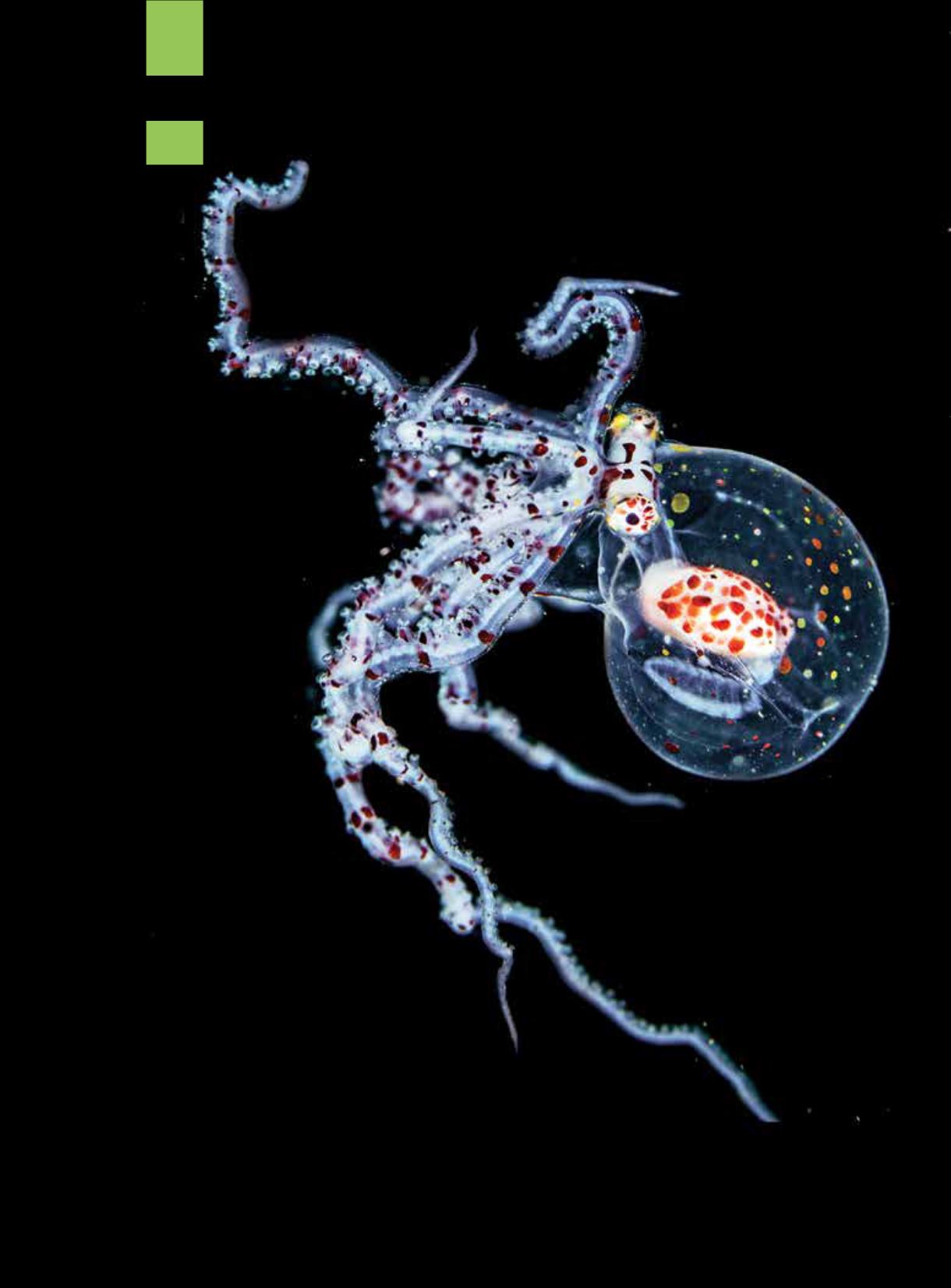
E
very once in a while Mother
Nature pulls back the curtain
to reveal a part of the show
that I have never seen before, as was
the case when we found this pelagic
octopus. At first I nearly dismissed
the transparent gelatinous creature
as a piece of plastic — that is, until it
began to pulsate and ever so slightly
change directions.
Drifting on the night’s ocean
current, planktonic larvae from many
different marine creatures can be
found midwater in various stages of
development. This image documents
the developmental phase of an
octopus described as “settling” that
briefly occurs when an octopus is
no longer larvae but not quite ready
to begin its life on the sand. Its only
defense against predation at this
stage is its transparency and a bit
of luck.
Although the octopus was
extremely difficult to properly identify,
Richard Ross, an octopus specialist at
the California Academy of Sciences,
gave it the possible ID of “settling
wunderpus.” The animal’s digestive
tract can be seen clearly through
its mantle along with its hearts and
brain. The barring on its arms and the
pigments appearing as flecks of color
closely resemble that of a Wunderpus
photogenicus.
PARTING SHOT
116
|
FALL 2014
EQUIPMENT:
Nikon D7100, 105mm macro lens, Sea and Sea MDX-D7100 housing,
Sea and Sea YS-250PRO strobes (2) on low power
SETTINGS:
1/100 sec. @ f/10, ISO 100
LOCATION:
Anilao, Philippines
By Mike Bartick


